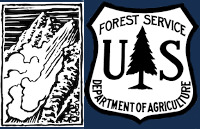The snowpack was historically low from when we started forecasts on December 7th through the beginning of February. We had long dry spells interrupted by a couple “storm cycles”. Snowfall was minimal with 1-2” of SWE over a week in December, and 2-4” of SWE over 2-3 weeks in January. That was enough to create a slab and widespread avalanche activity...
Articles
We just ended our 34th year of operation. This winter was challenging on several fronts, with an unusually late start to the season and a persistent weak layer that created unprecedented instability.
In 9 years of avalanche forecasting I have not seen a snowpack so weak. When I thought the snowpack was bad in past seasons, it wasn’t this bad. Almost every season we have weak, sugary faceted snow near the bottom of the snowpack, and at least half the time the weak snow is a problem all season.
Clicking into our skis or jumping on our sleds in search of powder is a universal mission at winter trailheads throughout North America. While the enjoyment is undeniable, the risks are real. Weather, avalanches, breakdowns, yard sales, and being thrown from a sled like a bronc rider are things we accept. We train and practice and push ourselves to be competent in the face of these hazards.
After a warm start to fall, winter abruptly began with 1-3 feet of snow in the mountains on October 22-24. Like most of the west, southwest Montana had average to above average snow and cold temperatures the entire season. These conditions brought plenty of avalanche activity.
We just ended our 33rd year of operation with a winter of cold temperatures, above average snowfall and snow depth measuring 100% to 152% of normal on April 1. After a few anemic seasons this was a reminder that the snowfall pendulum swings both directions.
Click .PDF below for full season summary.
On October 12 there was enough snow on the ground for us to issue our first early season bulletin. We issued our first daily forecast on December 10, with a moderate danger throughout the area. Click .PDF below for full season summary.
We just ended our 32nd year of operation. It was a low snow year with snowpack totals 70-80% of normal.
All winter we talked about weak, sugary snow near the base of the snowpack creating unstable conditions, especially in the mountains near Bozeman, Big Sky and West Yellowstone. From late October through November the mountains received 2-4 feet of snow, followed by mostly dry and cold weather through mid-December. This long period of high pressure caused the early season snow to become faceted, sugary and weak. Read full summary in PDF below.
We just ended our 31st year of operation after a winter of increased backcountry traffic on an avalanche prone snowpack. The season started on October 14 with an early season snowstorm and first recorded avalanches. We issued 12 early season bulletins before the start of the daily forecasts which ran for 121 days from December 12 to April 11.
